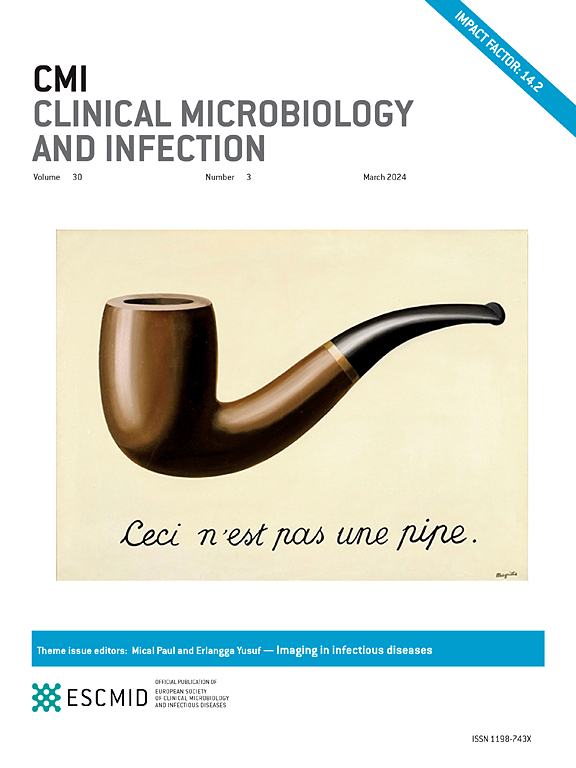Defining bloodstream and central venous catheter-related infections in patients following haematopoietic cell transplantation: position paper of the European Blood and Marrow Transplantation Society Infectious Diseases Working Party and Practice Harmonization and Guidelines Committee
IF 8.5
1区 医学
Q1 INFECTIOUS DISEASES
引用次数: 0
Abstract
Scope
This position paper is intended for clinicians and data managers involved in the diagnosis, management, and reporting of bloodstream infection (BSI) and central venous catheter (CVC)-related BSI and CVC-related local skin/soft-tissue infections (lSSTI) in haematopoietic cell transplant (HCT) recipients.
Methods
The panel reviewed the relevant guidelines on BSI and CVC-related lSSTI definitions, and their applicability to HCT recipients. We developed practical recommendations aiming to establish their standardized reporting considering the unique features of HCT recipients.
Questions addressed by the position paper
.
Primary BSI definitions
Adequate blood volume is crucial for correct sampling. Definite BSI is defined as non-commensal pathogen identified by one positive culture or non-culture-based test, or two separate positive blood cultures with commensal pathogen, accompanied by any clinical or inflammatory markers deterioration. One positive blood culture set with viridans group Streptococci accompanied by clinical or inflammatory markers deterioration is defined as a probable BSI. After the validity confirmation, each primary BSI should be assessed for being a catheter-related BSI and/or mucosal barrier injury BSI; this terminology is not exclusive. CVC is considered a definite BSI source when the same pathogen grows from the cultures obtained from the CVC tip/hub and peripheral blood; confirmed by the differential time to positivity test or quantitative criteria. Mucosal barrier injury is considered a source when an intestinal pathogen grows in a patient with an appropriate clinical context.
CVC-related lSSTI definitions
CVC-related lSSTI (e.g. exit site, tunnel infection) should be defined as clinically or microbiologically documented (or both).
Definition of recurrence and attributable mortality
Relapse should be differentiated from reinfection when reporting recurrence. We propose reporting 30-day mortality after BSI. Attributable mortality is defined if death directly attributed to BSI by the treating physician assessment. Uniform definition and reporting of BSI types will improve the analysis of their rates, related outcomes, and efficacy of preventative and treatment measures.
定义造血细胞移植后患者的血流和中心静脉导管相关感染:EBMT传染病工作组和实践协调与指南委员会的立场文件
本意见书适用于参与造血细胞移植(HCT)受者血流(BSI)和中心静脉导管(CVC)相关BSI (CRBSI)和CVC相关局部皮肤/软组织感染(lSSTI)的诊断、管理和报告的临床医生和数据管理人员。方法:专家组回顾了BSI和cvc相关的lSSTI定义的相关指南,以及它们对HCT接受者的适用性。考虑到HCT接受者的独特特征,我们制定了实用的建议,旨在建立他们的标准化报告。立场文件解决的问题:主要BSI定义充足的血容量对于正确采样至关重要。明确的BSI定义为通过一次阳性培养或非培养试验确定的非共生病原体;或两个单独的阳性血培养与共生病原体,并伴有任何临床或炎症标志物恶化。一组血培养阳性的绿蛋白组链球菌伴临床或炎症标志物恶化被定义为可能的BSI。在有效性确认后,每个原发性BSI应被评估为CRBSI和/或粘膜屏障损伤(MBI) BSI;这个术语不是排他性的。当从CVC尖端/中心和外周血中获得的培养物生长出相同的病原体时,CVC被认为是BSI的明确来源;经差异阳性时间检验或定量标准确认。当肠道病原体在具有适当临床背景的患者体内生长时,MBI被认为是一种来源。cvc相关的lSSTI定义scvc相关的lSSTI(如出口部位、隧道感染)应定义为临床或微生物记录(或两者兼有)。复发的定义和归因死亡率报告复发时应将复发与再感染区分开来。我们建议报告BSI后30天死亡率。可归因死亡率定义为经主治医师评估直接归因于BSI的死亡。BSI类型的统一定义和报告将改善对其发生率、相关结果和预防和治疗措施效果的分析。
本文章由计算机程序翻译,如有差异,请以英文原文为准。
求助全文
约1分钟内获得全文
求助全文
来源期刊
CiteScore
25.30
自引率
2.10%
发文量
441
审稿时长
2-4 weeks
期刊介绍:
Clinical Microbiology and Infection (CMI) is a monthly journal published by the European Society of Clinical Microbiology and Infectious Diseases. It focuses on peer-reviewed papers covering basic and applied research in microbiology, infectious diseases, virology, parasitology, immunology, and epidemiology as they relate to therapy and diagnostics.

 求助内容:
求助内容: 应助结果提醒方式:
应助结果提醒方式:


